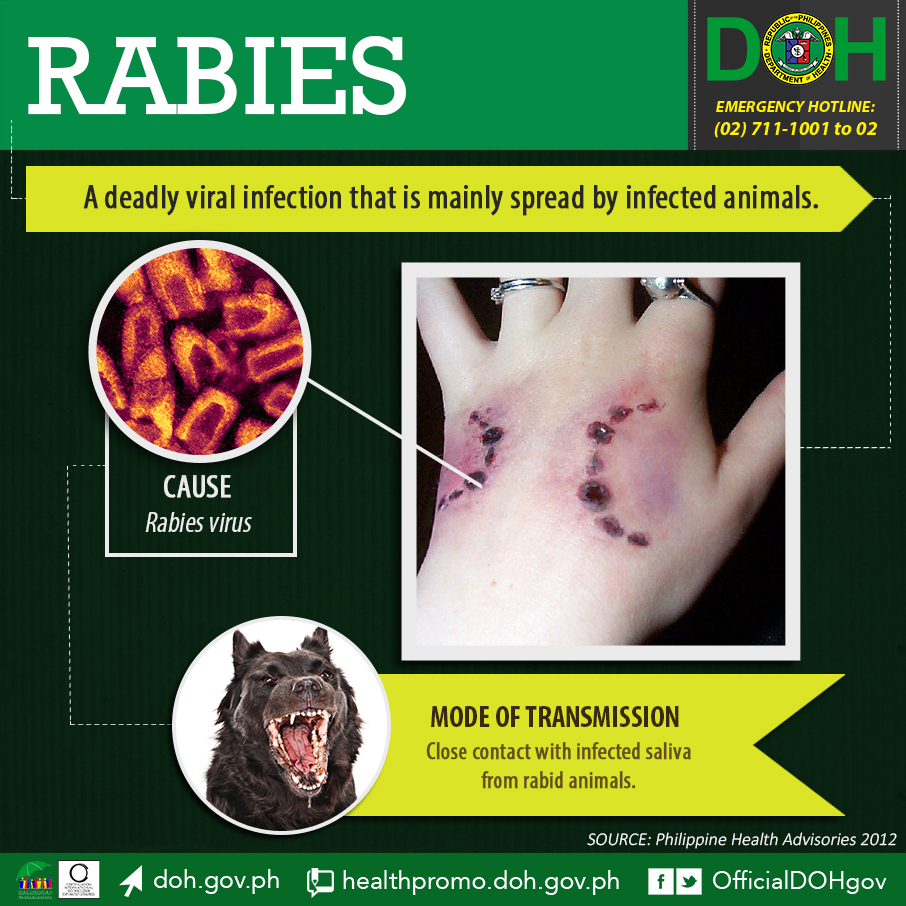A seven-year-old boy from Mandaue City, Cebu, Philippines died from the lethal virus, rabies, two weeks after being bit by his neighbors dog on the head, according to an Abante-Tonite reporte (computer translated).

The child received three rabies post exposure prophylaxis shots, the report notes.
The neighbor admits his dog had not been vaccinated against rabies in a long time.
Department of Health records reveal that some 200 to 300 Filipinos die every year due to rabies.
Watch GMA News report HERE
Rabies is an acute viral infection that is transmitted to humans or other mammals usually through the saliva from a bite of an infected animal. It is also rarely contracted through breaks in the skin or contact with mucous membranes.
According to the Control of Communicable Diseases Manual, all mammals are susceptible to rabies. Raccoons, skunks, foxes, bats, dogs, coyotes and cats are the likely suspects. Other animals like otters and ferrets are also high risk. Mammals like rabbits, squirrels, rodents and opossums are rarely infected.
Rabies infected animals can appear very aggressive, attacking for no reason. Some may act very tame. They may look like they are foaming at the mouth or drooling because they cannot swallow their saliva. Sometimes the animal may stagger (this can also be seen in distemper). Not long after this point they will die. Most animals can transmit rabies days before showing symptoms.
Initially, like in many diseases, the symptoms of rabies are non-specific; fever, headache and malaise. This may last several days. At the site of the bite, there may be some pain and discomfort. Symptoms then progress to more severe: confusion, delirium, abnormal behavior and hallucinations. If it gets this far, the disease is nearly 100% fatal.
Worldwide it is estimated that there are more than 69,000 deaths due to rabies annually.
Human rabies is prevented by administration of rabies vaccine and rabies immune globulin.


I love Cebu. I miss Bantayan Island. I’ll be going back next year to the Philippines
12 days ago I was bitten on my foot and hand by a stray dog in Moalboal. The dog was extremely aggressive and attacked for no reason and attacked a random dog immediately after attacking me. It was drooling so badly it’s entirely chest was wet. After the bite I was turned away from three hospitals and three private doctors. The bite center in Badian was one of the hospitals that turned me away. But I was persistent and returned the next day. They gave me two shots of the anti rabies vaccine. The wounds were never properly cleaned and immunoglobulin was not used. They had me return on days 6 and 9 for more anti rabies vaccines. I am now extremely worried for my life.
On a side note the attack happened in front of a security camera. I brought a picture of the dog from the security footage to the barangy captain in moalboal. He took my name and number but didn’t seem concerned with catching the aggressive stray. He told me they didn’t have anyone trained to catch a rabid dog.